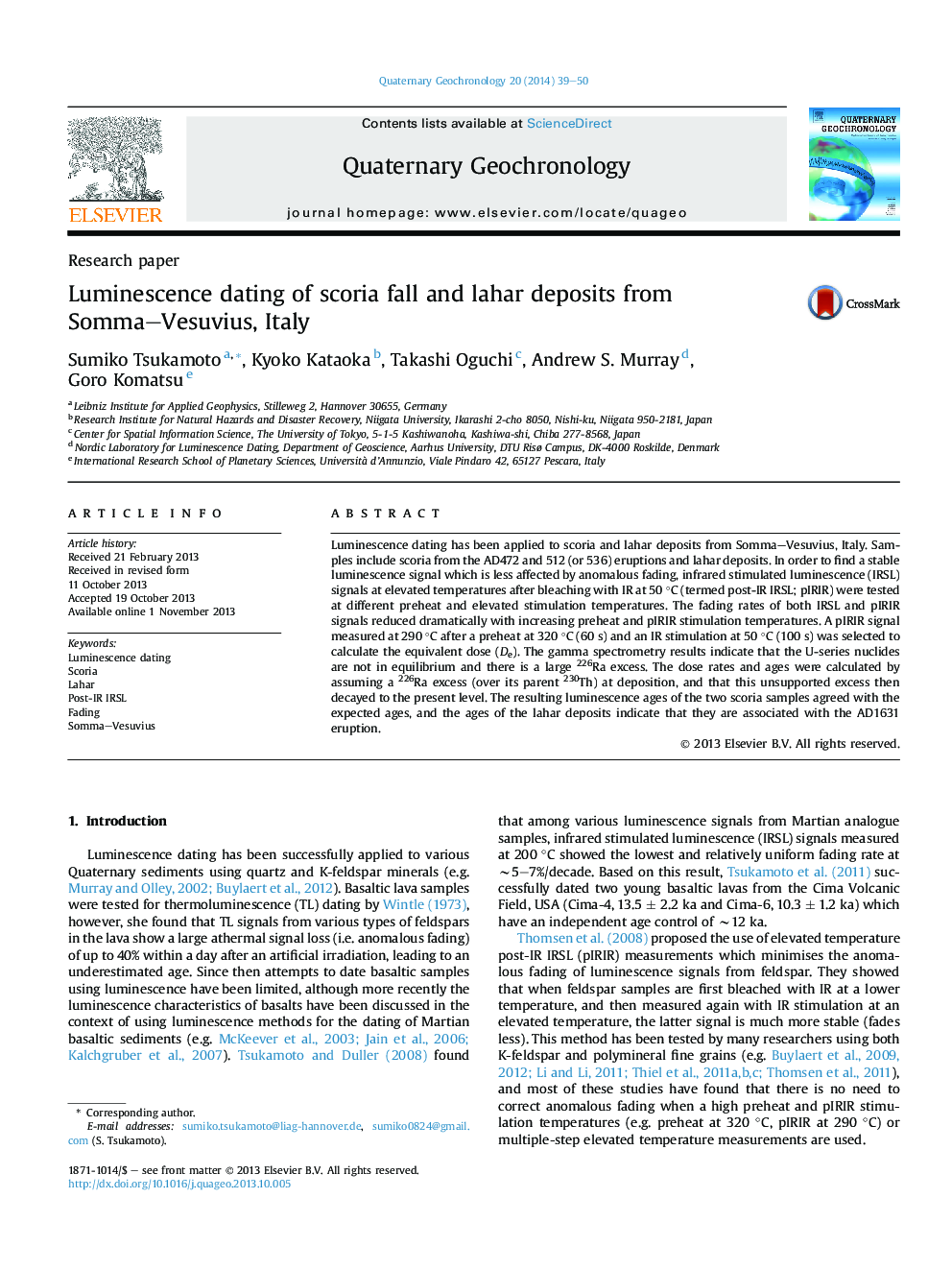| کد مقاله | کد نشریه | سال انتشار | مقاله انگلیسی | نسخه تمام متن |
|---|---|---|---|---|
| 4724984 | 1639856 | 2014 | 12 صفحه PDF | دانلود رایگان |

• Scoria and lahar deposits from Vesuvius were dated by luminescence dating method.
• IRSL fading rate was reduced dramatically with preheat and stimulation temperatures.
• Scoria from the AD472 eruption and lahar from the AD1631 eruption were dated.
Luminescence dating has been applied to scoria and lahar deposits from Somma–Vesuvius, Italy. Samples include scoria from the AD472 and 512 (or 536) eruptions and lahar deposits. In order to find a stable luminescence signal which is less affected by anomalous fading, infrared stimulated luminescence (IRSL) signals at elevated temperatures after bleaching with IR at 50 °C (termed post-IR IRSL; pIRIR) were tested at different preheat and elevated stimulation temperatures. The fading rates of both IRSL and pIRIR signals reduced dramatically with increasing preheat and pIRIR stimulation temperatures. A pIRIR signal measured at 290 °C after a preheat at 320 °C (60 s) and an IR stimulation at 50 °C (100 s) was selected to calculate the equivalent dose (De). The gamma spectrometry results indicate that the U-series nuclides are not in equilibrium and there is a large 226Ra excess. The dose rates and ages were calculated by assuming a 226Ra excess (over its parent 230Th) at deposition, and that this unsupported excess then decayed to the present level. The resulting luminescence ages of the two scoria samples agreed with the expected ages, and the ages of the lahar deposits indicate that they are associated with the AD1631 eruption.
Journal: Quaternary Geochronology - Volume 20, April 2014, Pages 39–50